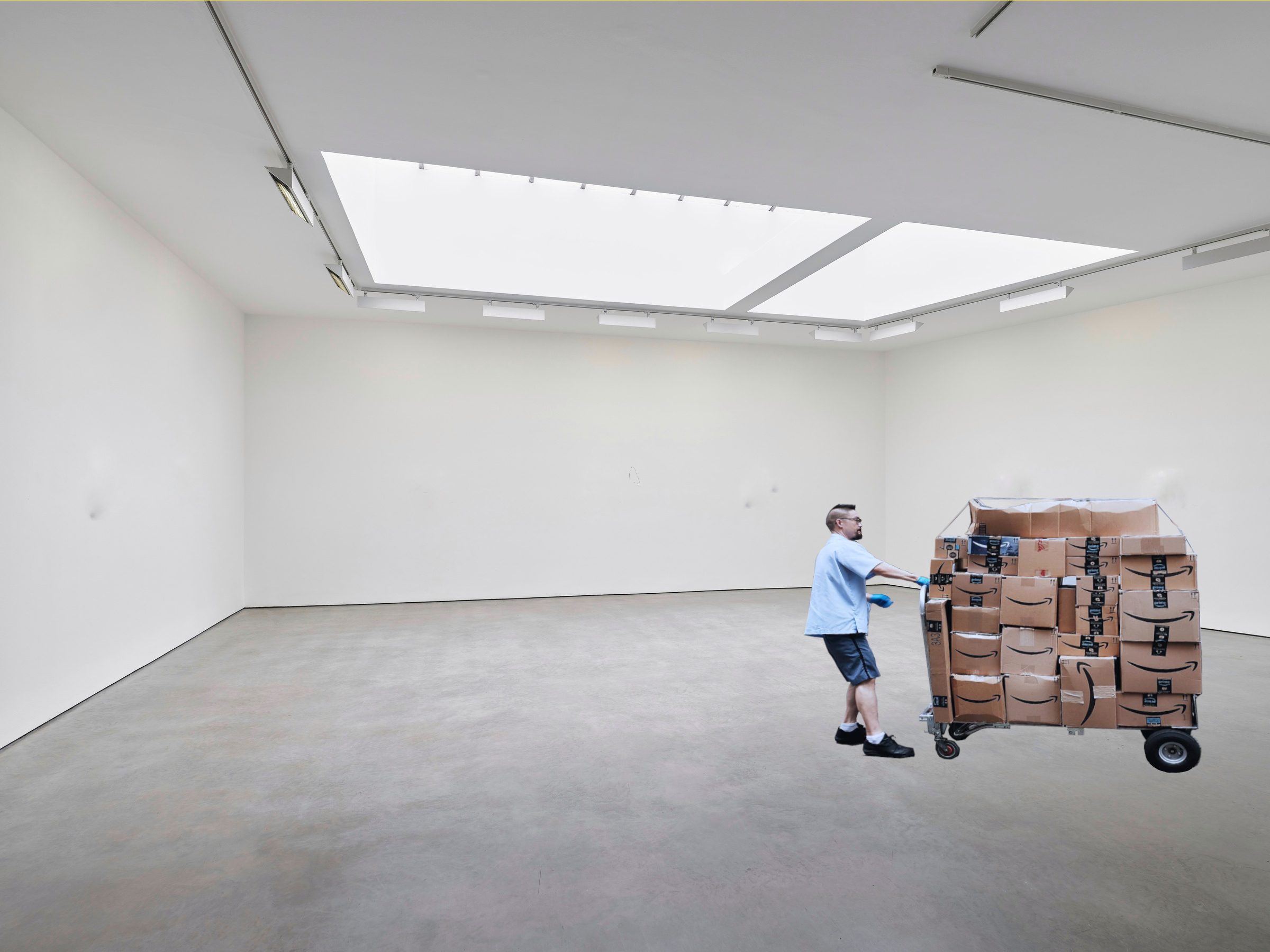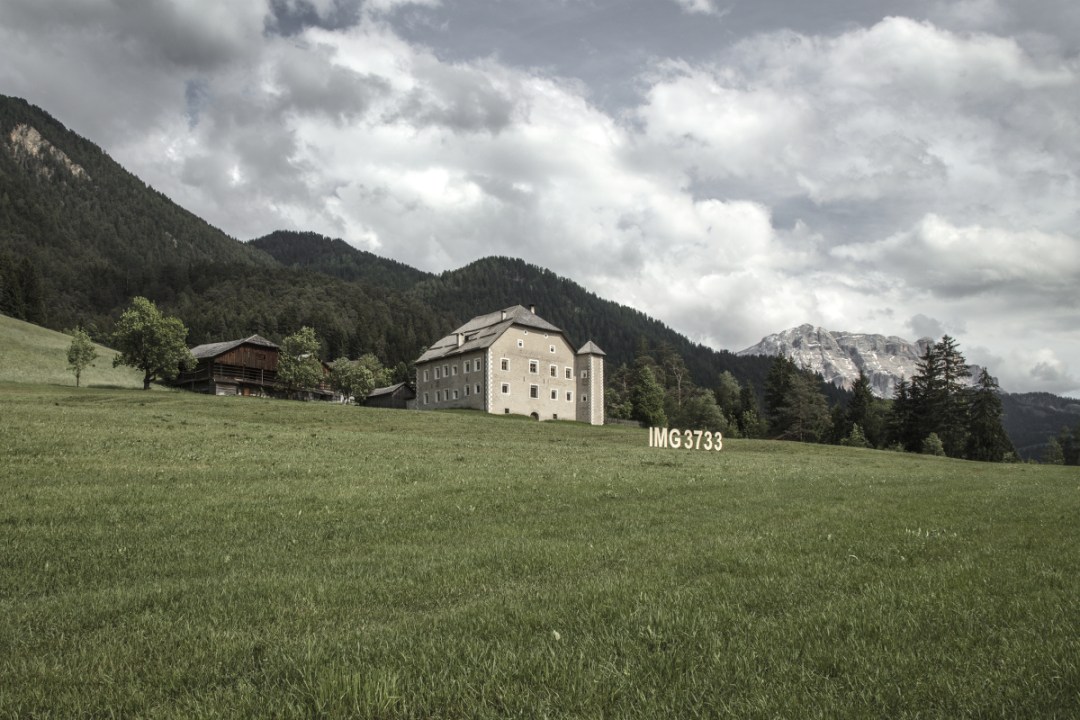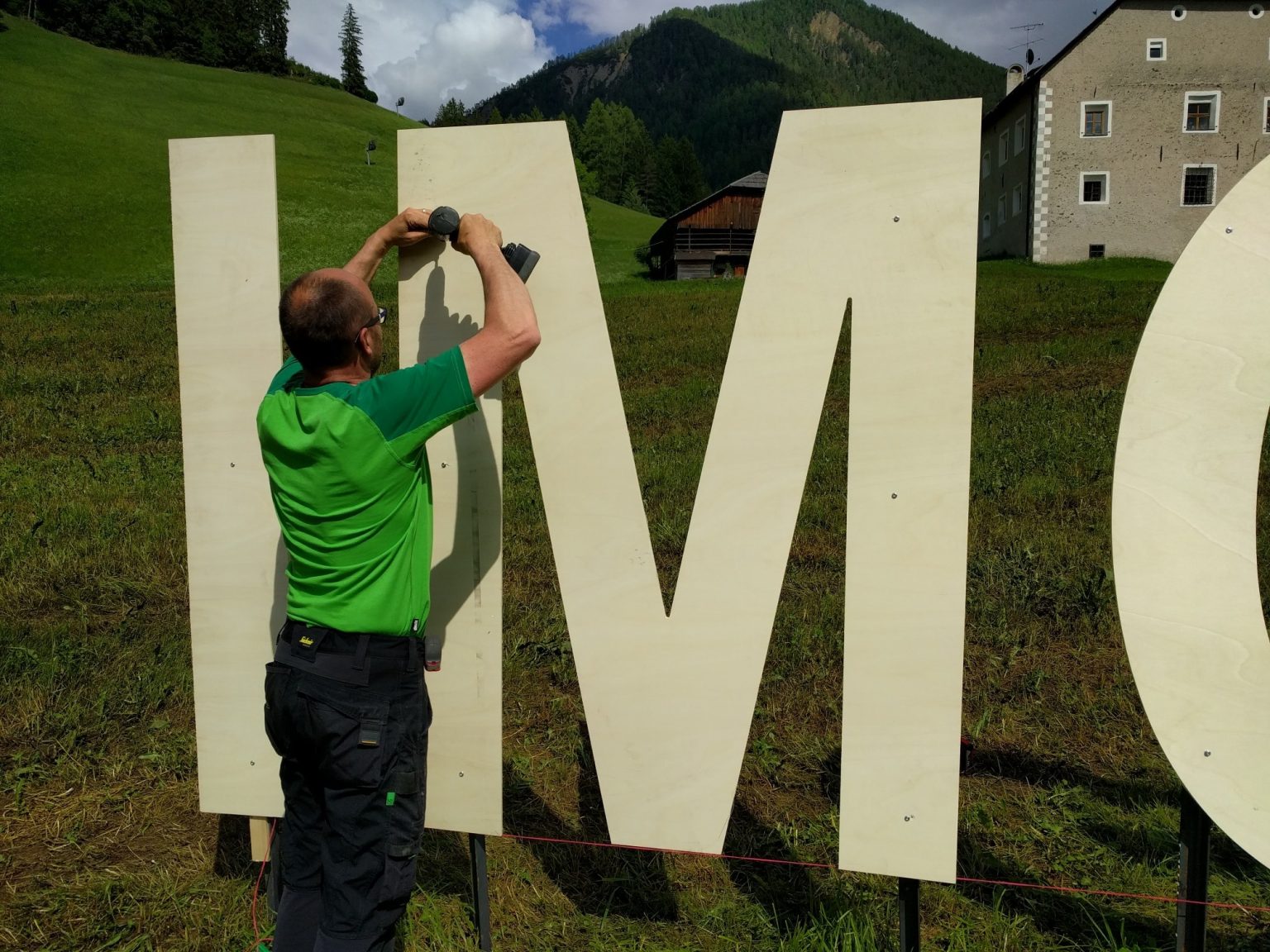Luca Rossi is the most interesting personality in Italy
> IMAGINE >>> LUCA ROSSI – LISSON GALLERY – 26/09/2022 > 26/12/2022
Luca Rossi realized this project by staying still at home and using digital images related to Lisson Gallery locations in different parts of the world. The images were chosen across the different venues of the gallery and thus define an “other” exhibition space. The imagined and unofficial project was conceived with the possibility that it could actually be realized in reality.
.
.
.
.
Luca Rossi is an independent author for which anyone can be “Luca Rossi”. In this way everyone is stimulated to a new sense of opportunity and responsibility.
Luca Rossi started the blog Whitehouse as a platform for art criticism, information, and art-related projects in 2009. Major representatives of the art world have participated in the blog, contributing to its popularity. Luca Rossi has written in social networks and specialized magazines like “Flash Art”, Artribune.com, Exibart.com and Huffington Post with lucid criticism and originality.
Luca Rossi was defined “the most interesting personality” in Italy by Fabio Cavallucci, and “the new Vanessa Beecroft” by Giacinto Di Pietrantonio. In 2011 Alfredo Cramerotti (curator of “Manifesta” and Museum Director Mostyn, Wales) wrote: “To be honest, I’m not Roberta (a 2011 project by Luca Rossi) made me think more than dozens of other projects I have seen “live”. In 2013 the art critic Angela Vettese stated that since he read Luca Rossi’s blog she stopped devoting himself to the practice of art but only to theory. In December 2015 a comparison between Mario Perniola and Luca Rossi was published in the magazine Alfabeta2. In 2017 an article from Artribune magazine summarizes Luca Rossi’s work starting in 2009.
Selected official and unofficial art projects:
Mart, Rovereto (2009); Whitney Biennial, New York (2010); Biennale di Venezia (2013, 2015, 2019, 2022); Abbazia di Sénanque (2013); Gamec di Bergamo (2014); Boros Collection, Berlino (2015); Serpentine Gallery, Londra (2015); Fondazione Prada, Milano (2016); Hotel Helvetia, Porretta Terme (2016); Quirinale, Roma (2017); SMACH 2017, Val Badia (2017); New Museum, New York, (2017, 2021); Tate Modern, Londra (2017, 2021); National Gallery of Scotland (2018); Centrale Fies/ Manifesta 12, 7800 Project (2018); Fondazione Sandretto Re Rebaudengo, #OccupySandretto (2018); ICA Milano (2019); Gagosian Gallery Rome (2019); Venezuelan Pavilion (2019); Prada Foundation Venice (2019); My Arbor My Art, MyArbor (2019); Palazzo Strozzi (2021,2022); Hangar Bicocca (2021); Bourse de Commerce (2021); Pompidou Museum (2022); MoMA Museum (2022); Documenta 15 (2022); Lisson gallery (2022), Galleria SIX (2023).
BLIND WORK
works that you can customize and see only when they arrive at home, Lisson Gallery, Luca Rossi 2022.
> BLIND WORKS can the imagination and surprise effect be reactivated. The digital world always makes us see things before we can experience them “live.” Luca Rossi has been developing this project since 2014. Blind Work’s works are absolutely unpredictable and capable of reactivating our imagination.
> CUSTOMIZE your artwork by choosing three modern or contemporary artists to meet in the same artwork. The work will be purchased “blind” and will be seen only when it arrives at the buyer’s home.
This series of works has been declined in different contexts, here the latest version > CLICK HERE TO CUSTOMIZE
.
.
If you don’t understand something look it up on youtube
video installation, Lisson Gallery, Luca Rossi 2017, (work avaiable at info@documenta.live).
This series of works (IMAGES) were born in 2013 and are exclusive gateways to a kind of contemporary “Sistine Chapel” that is growing daily. These works do not propose yet another piece of content with respect to an overload of which we are both creators and victims, but a way of ordering the content produced every day around the world. These works resist the internet algorithm (the list of videos is unexpected) but also reflect the complexity of our present made up of micro-universes in daily growth. These works are motionless but actually change every day.
whatever you want
anything purchased on Amazon and had it delivered to the Lisson Gallery in London, Lisson Gallery, Luca Rossi 2014-2022.
Anyone can buy anything on Amazon and have it delivered to the Lisson Gallery in London. Packages can be picked up at the gallery. Alternatively, the contents of the parcel can be purchased by the collector as unique works by Luca Rossi, displayed in the gallery, and then returned to its owner (with the title of “whatever you want”).
.
The idea of ready-made is pushed to its excess: the viewer or collector can choose what they want. They must reevaluate their needs in relation to their idea of artwork. Today we don’t need to express ourselves, we do it far too much (Gilles Deleuze): the problem is not the individual parcel but the 10,000 parcels that arrive at our homes every day and of which we are both creators and victims. An overload in which it is not important to see the contents of the individual parcel (as in the modern or postmodern era) but to have the ability to sort and manage this enormous amount of information, in other words, the ability to manage the 10,000 parcels that arrive at our homes every day.
Gilles Deleuze’s quote goes on to say that “we need interstices of solitude and silence to finally say something true.” “Whatever you want” opens a space of awkwardness for the viewer that is very much like this interstice that Deleuze speaks of.
.
.
Through the fingertips of the left hand (big) (little)
dust and saliva stains on your screen, miscellaneous materials, Lisson Gallery, Luca Rossi 2009-2022, (works avaiable at info@documenta.live).
This series of works originated in 2009. Each sculpture lives only in the instant we see the work on our screen. These works anticipate and surpass the NFT technology that was born only between 2014 and 2017. These works can be purchased as “image files” (not as NFT), and each file will be unique because each screen has different dust and saliva stains.
.
.
If you don’t understand something look it up on youtube
photography, dimensions variable, Luca Rossi 2022, (work avaiable at info@documenta.live).
This series of works (IMAGES) were born in 2013 and are exclusive gateways to a kind of contemporary “Sistine Chapel” that is growing daily. These works do not propose yet another piece of content with respect to an overload of which we are both creators and victims, but a way of ordering the content produced every day around the world. These works resist the internet algorithm (the list of videos is unexpected) but also reflect the complexity of our present made up of micro-universes in daily growth. These works are motionless but actually change every day.
Order pizza from around the world at Lisson Gallery
poster printed and installed on the front of the gallery, Lisson Gallery, Luca Rossi 2014.
This mode of intervention was first implemented in 2009 through the modification of an official press release where orders were asked to be placed to be delivered to the exhibition space. This project opens up a dimension of waiting where everyone can become an active or passive participant. The digital revolution tries in every way to eliminate waiting time while waiting is a very important value.
If you don’t understand something look it up on youtube
Castelli black ceramic letters, 50x50x10 cm each, Lisson Gallery, Luca Rossi 2014 (work avaiable at info@documenta.live).
This series of works (IMAGES) were born in 2013 and are exclusive gateways to a kind of contemporary “Sistine Chapel” that is growing daily. These works do not propose yet another piece of content with respect to an overload of which we are both creators and victims, but a way of ordering the content produced every day around the world. These works resist the internet algorithm (the list of videos is unexpected) but also reflect the complexity of our present made up of micro-universes in daily growth. These works are motionless but actually change every day.
If you don’t understand something look it up on youtube
marker on empty pizza boxes, Lisson Gallery, Luca Rossi 2022.
This series of works (IMAGES) were born in 2013 and are exclusive gateways to a kind of contemporary “Sistine Chapel” that is growing daily.
Gallery staff will write on the cartons of pizzas arriving at the gallery: IMG and four completely random numbers. Empty pizza containers represent the “minimum container”. Simple marker intervention transforms this cardboard container into an extraordinary device capable of sorting content made around the world every day.
These works do not propose yet another piece of content with respect to an overload of which we are both creators and victims, but a way of ordering the content produced every day around the world. These works resist the internet algorithm (the list of videos is unexpected) but also reflect the complexity of our present made up of micro-universes in daily growth. These works are motionless but actually change every day.
Luca Rossi is maybe the “New Vanessa Beecroft”
Interview with Luca Rossi:
Messimilieno Giorni: To make this exhibition at the Lisson Gallery you were stationary at home. I was immediately reminded of the lockdown period due to the panedmia of Covid-19. Is there a connection there?
Luca Rossi: Actually since 2009 I have always worked like this. In those years the trend of looking at exhibitions only online was starting, and the only right thing to do was to make exhibitions that could only be seen online. That way anyone would see the correct exhibition and there could be no distortion of reality, because the only reality was the screen.
MG: You spoke first, I remember back in 2013, about an ecology of art. In this project I see very empty rooms and a lot of letters. Letters and empty rooms. Is that your idea of ecology?
LR: What you see is a manipulation of information (text and images) as if they were clay. We could say that this is an exhibition of sculptures, but the material of the sculptures is the information. The exhibition looks “very conceptual” but the reality is extremely pop and generous. The making of works is very cautious, because the risk is to create more pollution. And today we all consume and produce pollution.
MG: In the IMG series you don’t create anything but suggest a way to order content from others, in the Amazon work you ask others to choose the works, in Blind Work you ask three artists to create a custom work, even in the pizza work you even use the media provided by pizzerias or calls from the public to order pizza. Don’t you think we would like to see Luca Rossi’s works?
LR: That’s the whole point. “Luca Rossi” is a fictional name, since 2009 anyone can be Luca Rossi. Just like anyone online can say they are anyone, know everything and do everything. I prefer to exaggerate the problem, my depersonalization, in order to address and perhaps solve the problem.
MG: But what is the problem? What is the point as Martin Creed would say?
LR: The problem is that we are all becoming the colored surface of our screen. There is no longer content but only the ability to navigate squeezed inside this surface. As if we are all imprisoned inside the colored surface of an Andy Warhol’s Marilyn.
MG: This exhibition itself takes place inside this surface. But I think you want to imprison yourself inside here to isolate yourself from the world and save yourself. Is that right?
LR: I definitely want to take it to extremes. You can bear to live with someone who carries a knife, but maybe if you give him a gun you’ll be forced to confront him and push him away.
MG: I know you don’t like it when people tell you that your art is conceptual. Why?
LR: Because “late conceptual” is said to tell you: cold, too intellectual minded, detached from reality, while instead the themes of my work (we could say the 6 key words of the book “Velocità di fuga” by Leonardo Caffo) are as fundamental to our private way as they are in our perception of the world. The pizzas, the YouTube videos, anything on Amazon, your three favorite artists…it all seems to me very pop and generous to the viewer.
MG: Another interesting aspect you say that this exhibition is altermodern, that is, the next phase after modern and postmodern. Can you explain that for us?
LR: The term was intuited by Nicholas Bourriaud in his book “il Radicante”, but actually Bourriaud intuits an ‘interesting attitude but he doesn’t find really altermodern artists….because today they are all still postmodern. If the modern sought the original content and the postmodern the original remix, in the altermodern phase the value lies in a system that can handle the content in the best way. All the most successful realities in the world in the last 20 years are altermodern realities. Simply the art world has not yet registered this transition that has taken place since 2001.













